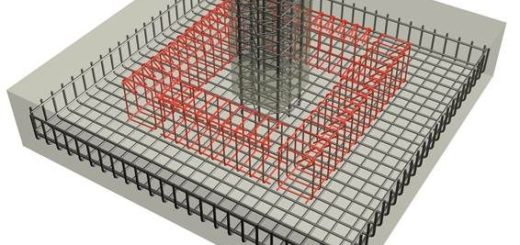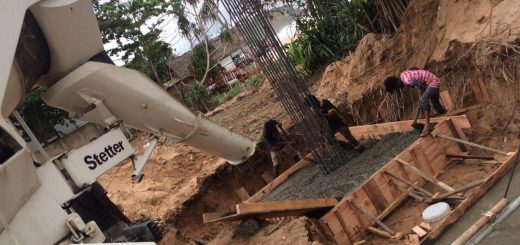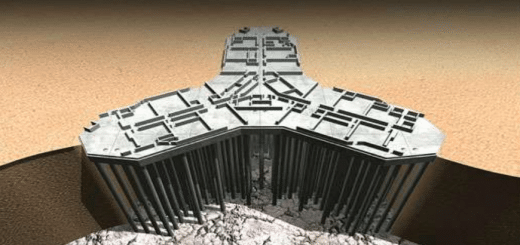How to Determine Foundation Type
In this article, we discuss what factors need to be considered when selecting the foundation type. The selection of the type of foundations is not based on a single factor. Let’s discuss how to determine foundation type based on key factors discussed below.
Foundation can be categorized as the shallow foundation and deep foundation.
Shallow Foundations
Foundations constructed at shallow depth falls into this category. The following list of foundations could be considered.
- Pad footings
- Combined footings
- Raft foundations
- Strip footings
Deep Foundations
Foundations constructed to a deeper depth falls under this category.
- Cast in-situ board files
- Driven piles (precast piles)
- Micro piles
The selection of each foundation type is based on the following factors.
- Importance of the Building
- Lift of the Structure
- Loads from Superstructure
- Type of Soil
- Adjoining Structures
- Available Foundation Types
- Cost of Construction
Importance of the Building
The importance of the building is considered when selecting the type of foundations. For the structures that are not that important or that does not need to last that long, foundation design may be considered less attended.
For example, when considering a temporary structure, we may not attend the settlement of the foundation. The higher settlement could be allowed.
Further, a structure constructed for fixing the banners/notices could not design limiting the settlement like a building. The selection of the foundation type is based on these factors and how important it is.
Life of the Structure
The design life of the structure is much important when selecting the foundation type.
| Design Working Life Category | Design Working Life | Example Structure |
| 1 | < 10 | Temporary structures |
| 2 | 10 to 25 | Replaceable structural parts; gantry girders, bearings |
| 3 | 15-30 | Agricultural and similar structures |
| 4 | 50 | Building structures and other similar structures |
| 5 | 100 | Monumental buildings, bridges, and other civil engineering structures |
| 6 | > 100 | Special structures |
Eurocode 1 provides the above table to specify the structural classes. There are six structural classes based on the design life of the structure.
For example, structures last less than 10 years, falls under the temporary structures category. When selecting the type of foundation, we do not require to pay the attention as much as we pay for a structure that lasts for 50 years.
Therefore, the importance and the design life of the structure shall be considered when selecting a suitable type of foundation.
Loads from Super Structure
Mainly there are two types of loadings are applied on foundations. They are vertical and horizontal loads. The article types of loads on structures discuss more on loadings on structures.
Further, the nature of the structure is also affecting the loads applied to the foundations.
- Type of the structure: whether the structure is a building, dam, retaining wall, steel tower, etc. could affect the structural loadings
- Height of the Structure: Especially in buildings, the height is a key factor affecting the loads on the foundations. When the number of floors is increasing, dead, and live loads on the foundation of increasing proportionately. Further, the increase of the height of the building causes increasing wind loading. In addition, the higher the number of floors higher the mase of the building causing large base shear on the foundation.
- When we consider a retaining wall, the condition of the soil and the type of stability method considered affecting the structural loads. Whether we consider the active pressure or at rest pressure condition is one of the key factors affecting loads on the foundations. The article stability analysis of structures and lateral earth pressure coefficients discusses more on these.
Effects of Type of Soil on Selection of Foundation Type
One of the most important factors to be considered is the soil type in selecting foundation types.
Whether it is a shallow foundation or deep foundation, the condition of the soil is used to determine the foundation type, dimensions.
Once the loads from the superstructure are evaluated, it can be decided whether to provide a shallow foundation or deep foundations.
The soil investigation is done and geotechnical engineers’ recommendation is taken for a suitable type of foundation based on loads of the superstructure.
Type of the foundation and capacity of the soil is provided by the geotechnical recommendation is used to design the foundation.
When we consider a shallow foundation, there could be footings or raft foundations. Allowable bearing capacity and the settlement will be given as per the condition of the ground.
When deep foundations such as cast in situ piles, micro piles, driven piles, etc. are considered a type of the soil and the condition of the rock are considered to select the suitable foundation type.
Impact of Adjoining Structures on Selecting Foundation Type
When the buildings need to be located very closely, construction shall be done without making any damages to the existing structures.
For example, when there is a basement to be constructed in an area where the water table is very close to the ground, dewatering is required to construct the basement.
If the adjoining building is constructed on shallow foundations, dewatering will lower the groundwater table resulting in settlement of the adjoining building. It could crack the building and neighbors will take action to stop the work and for getting the compensations.
In these locations, attention shall be made when the foundations are constructed in this nature.
Available Foundation Types
Consideration of the type of foundation depends on the available foundation types. At the beginning of this article, we discussed the available foundation types to could be considered.
One we obtain loads of the superstructure, we can consider the most suitable type of foundations based on the condition of the ground that the structure is built.
Effect of Cost of Construction Selection of Foundation Type
The cost of construction is a key factor need to be considered in determining a suitable type of foundation.
Structure to be built on the shallow foundation or deep foundation to be decided based on the condition of the ground. However, there are other ways of selecting or proposing a suitable foundation type.
For example, consider a building that needs to be constructed on weak ground, and this ground weak up to a depth of 2.5m. On the occasion, one might select deep foundation types such as cast-in-situ pile, driven pile, or micro piles.
Another option is to improve the ground up to the 2.5m height and place the shallow foundations.
The selection of a suitable method on an occasion of this nature could be done based on the cost of the construction.
Articles, ground improvement methods and ground improvement for low rise buildings discuss the methods available to improve the ground on a smaller scale to a larger scale.





